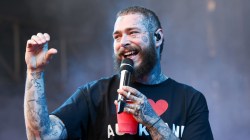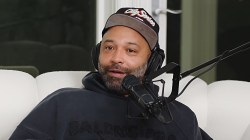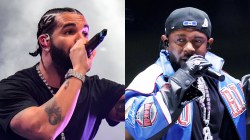Soon after graduating from Wesleyan University in 2007 with a degree in economics, Himanshu Suri — better known to his fans as Heems — began working in Wall Street’s financial sector. Just three years later, his group Das Racist were being hailed as one of the hottest prospects in the game.
When the trio called it quits in 2012, the Indian-American rapper formed Swet Shop Boys with Riz MC and Redino to further channel his passion for the politics of his ancestry and everything he could reach for on its fringes. Following the release of their last project, 2017’s Sufi La EP, Heems took some time away from the public’s glare.
AD LOADING...
Aside from a few isolated singles and features, he remained largely inactive in the music circuit — both as a solo artist and member of a group — for the next five years while plotting the launch of his multi-purpose brand, Veena. Named after his mother, it serves as an outlet for his glitter-eyed ambition as an artist and businessman.
The recently inaugurated website is an assemblage of the 38-year-old’s scatterbrain — it has an editorial branch for a tri-annual magazine but also an online store through which he sells t-shirts and coconut oil sourced from India as well as vinyl records from his catalog. Most importantly, though, the imprint is also a conduit for publishing music.
AD LOADING...
Now, nearly 10 years after the release of his last solo album, 2015’s Eat Pray Thug, the New York native has teamed up with producer Lapgan for new album LAFANDAR.HipHopDX caught up with Heems to discuss the new LP, why he decided to step away from making music for a while and what plans he has for the future.
HipHopDX: You took a break from actively releasing music for a few years, but you’re now back with a new album. Was there a specific moment or phase that made you decide to resurface?
Heems: “I was in a place where I didn’t want to make music and I had my hands full with building a platform for other artists to be able to find success. It was rewarding and stable, plus I got to be behind the scenes and work with a whole lot of South Asian artists.
“I just didn’t feel comfortable putting my own stuff out, but then I did the Throwing Fits podcast — being visible and doing something in media again opened me up to showing more of myself and coming out of my recluse-rapper phase. Music isn’t what I was turned off to, it was social media, parasocial relationships, touring and all the stuff that’s annoying about making music … everything but making music.”
AD LOADING...
How did you stay involved with music while not making any yourself?
“I helped manage this band, Weston Estate, which was cool. I’m always helping out artists if I like their shit and I happen to be in a position to spread it. Even if someone writing a PhD wants to talk to me for their paper, I’ll get on the phone with them; [if] somebody on LinkedIn says, “I want to get into music and I went to Wesleyan,” I’ll talk to them. So it wasn’t exactly A&R or management, but more like a helpful uncle.”
Is your new album LAFANDAR driven by a specific concept or was it made intuitively?
“No, I didn’t really have themes or prompts for this one. For those five years, honestly, I didn’t even want to hit up producers or MCs, I just kind of tried to rap about being cool.
“Lapgan was influenced by [my debut mixtape] Nehru Jackets; so I didn’t really have to say much since he already knew my work. Also, Nehru Jackets itself was influenced by Madlib‘s Beat Konducta [series] and Dan The Automator‘s Bombay the Hard Way; so we had these touch points sonically. When I first heard him and signed him to Veena [Sounds], he was doing the type of shit I’m interested in — drums, Indian samples, crate-digging … like actual vinyl ripping, y’know?”
“There were some cuts that didn’t fit in with the other album I’m working on, VEENA, and they kind of just sat on the side. I was going to get like eight people on one track, but then I decided to start splitting it up. From there, it just grew into LAFANDAR. On VEENA, I get into healing, growing older, vulnerability and a breakup I went through, but this one is just more in my old vein. Like sketches, really, though my sketches have gotten a lot better.”

Lapgan (Press/Dennis Elliott)
What makes VEENA different from LAFANDAR?
“With Veena, [producer] Sid Vashi and I are exploring instrumentation — guitars and bass — because we were thinking more about sound design and the musicality of it. There’s a song with Panda Bear where I just rap and he sings, then there’s one with Blood Cultures that I sing on entirely … there’s also one with me, Patrick Wemberly and Lee Ranaldo [of Sonic Youth].
“LAFANDAR is more rooted in traditional rap. Though some songs on VEENA are driven by bars, I’m also singing and doing other stuff on it. I think LAFANDAR is who I am at my core as a rapper whereas VEENA is who I am as an artist and songwriter.”
What can you tell me about the Veena brand — how did it start and where’s it going?
“I was interested in building a space for writers I know and who can’t get everything published where they work for ad-driven purposes. Then, I also wanted to make this coconut oil and sell ayurveda products from India. Ultimately, I just ended up bringing together all these things I’m interested in — food, self-care, fashion, art, illustration — to build something greater than music. I’m also really into commerce, business, tech and design, so this became an outlet for me to grab whatever I wished off the isles because I just want to do everything.”
AD LOADING...
You interviewed Kendrick Lamar and Killer Mike for Noisey early in your career, which received a lot of praise. Have you considered doing something similar for Veena?
“I was just thinking about the Kendrick interview because a lot of people were calling me out like, ‘Why is he talking about himself,’ and then other people were like, ‘He’s an artist too!’ I was supposed to interview Gunplay for that series as well, but somebody forgot to charge the batteries or something. But yea, I could see myself doing that again, plus other things in media. I’m interested in content, curation and communication — the three Cs … and alliteration.
“Y’know, I sold the rights to Eat Pray Thug to Fox in 2015 for a sitcom about an Indian-American rapper who leaves rehab and moves back in with his parents, but it didn’t pan out. So I’ve also thought about comedy or writing a dramatic film.”
Are there any artists on your wish list that you’d like to work with?
“I hit up Doja Cat‘s manager and he was like, ‘She’s just put this album out and has this huge tour,’ but I was just happy to get a response. I emailed Four Tet, but I didn’t hear back from him. I got to see Sampha and Jai Paul play this year — I really like both of them, though I don’t know if I’d work with all the artists I’m into because we do different things and it might not work. I’m also trying to get Ruban Nielson from Unknown Mortal Orchestra to play guitar on the album. We’ve known each other for 10 years now; so working with him would be awesome.”
Who do you have the best chemistry with in the studio?
“Your Old Droog and I have a good thing going. It’s pretty cool how we came together, with Sean Price validating these two guys from the younger generation and being like, ‘You guys should make music together,’ and I was just like, ‘I’ll do whatever you fucking say — you’re godly.’ I also work well with Patrick Wemberly, who produced most of [Das Racist’s last album] Relax and actually recorded ‘Combination Pizza Hut and Taco Bell.’ It was really effortless to get back in the studio with him.”
AD LOADING...
Which artists would you like to see listed under the “Fans Also Like” section of your Spotify page?
“This guy Koushik, who just kind of released shit 15 to 20 years ago on Stones Throw and never made anything again. It was just like Hip Hop drums, shoegaze guitars and falsetto singing. Maybe Charanjit Singh, who I got to tour with in 2014 — he made arguably the first acid house record, combining Indian ragas with 303s and 808s.
“So I’d say people doing things that might seem atypical for a South Asian to do, people who are open to experimenting, people who are subversive, people with a sense of humor, people who can stretch the boundaries of what music can do and break the mold.”
Heems and Lapgan’s LAFANFAR is out now via Veena Sounds and Mass Appeal India. You can listen to it below:






